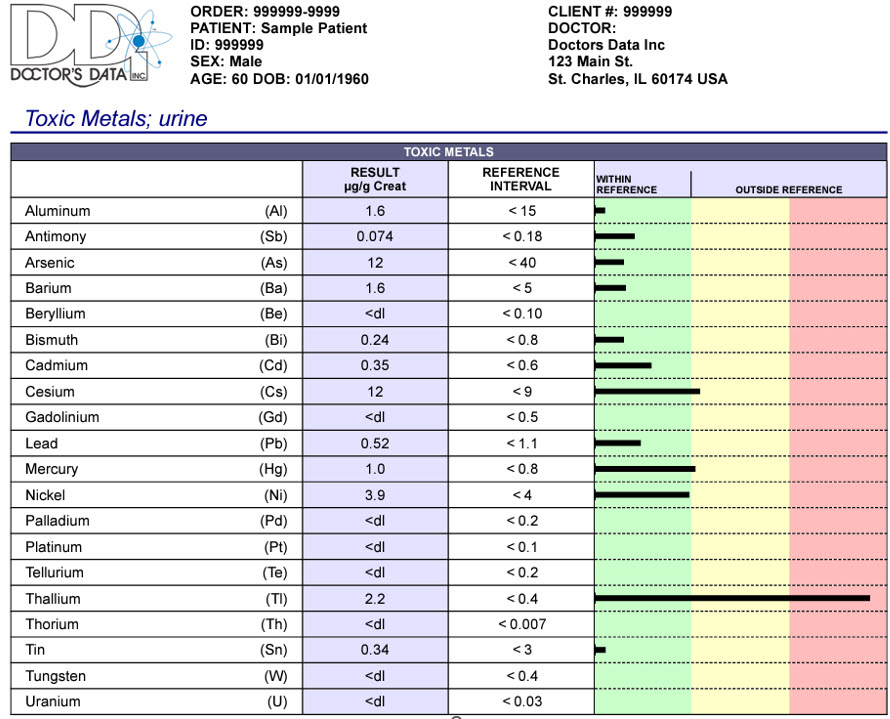Heavy Metals in Chocolate: The Dark (Chocolate) Truth

Recently, I have been fielding a lot of questions about heavy metals in chocolate (often referred to as heavy toxins). Food safety can be a depressing topic. Rice has arsenic, most fish contain mercury (some more than others), shrimp have arsenic, leafy greens take up cadmium from the soil, about 30% of the tap water in the US contains lead, and many foods are contaminated with pesticides, molds, and other heavy metals. As many of you have heard, some brands of chocolate tested by Consumer Reports contained alarming levels of lead and cadmium.
“Consumer reports tested 28 dark chocolate bars for lead and cadmium. To determine the risk posed by the chocolates in CR’s test, we used California’s maximum allowable dose level (MADL) for lead (0.5 micrograms) and cadmium (4.1mcg)”
You can ask a chocolate company to provide third-party testing to see the lead and cadmium levels. Because there are no federal limits on the amount of lead and cadmium that foods may contain, scientists at Consumer Reports used California’s maximum allowable dose level. They did this because they felt as though it was the most scientifically valid. Rather than list all the brands including the levels of lead and mercury I will refer the reader to free Consumer Reports for this information.
How Heavy Metals Get into Chocolate
The chocolate tree (Theobroma Cacao) produces fruits which are called pods. The seeds are then dried and separated from the shell. The Cacao trees take up cadmium from the soil, but this is not from pesticides. Lead, however, seems to get into raw chocolate powder after the beans are harvested. Lead is typically found on the outer shell of the bean. The longer the bean sits in the sun the more lead migrates from the outer shell into the internal part. It is easier to fix the lead problem because manufacturing practices can be altered but much harder for cadmium because the plant draws it up out of the soil.
It is recommended to eat no more than one ounce of chocolate per day. Since milk chocolate has less cocoa powder it is safer. One ounce is considered a small amount by most chocolate lovers. Many of my patients eat dark chocolate as their only dessert because of its effect on blood pressure, glucose metabolism, and because of the polyphenol (antioxidant) content. In fact, I have patients who eat chocolate every day.
How Heavy Metals from Chocolate Affect the Body
Cadmium from Cacao can damage the kidneys, bones, and the lungs if inhaled. Cadmium can damage DNA, chromosomes, and is a group B1 carcinogen according to the EPA. The World Health Organization classifies cadmium as a known human carcinogen. Cadmium is stored mainly in the kidneys and liver and may stay there for many years after exposure.
In adults, lead may cause hypertension, difficulty thinking, aggressive behavior, and coordination problems. Adults absorb only 20% of lead from food but that amount goes to 50% if on an empty stomach. Blood levels of lead may go up as lead is lost from bone (where it is stored) with age (osteopenia/porosis), during pregnancy, and lactation. Calcium deficiency accelerates this.
Children absorb more lead than adults. Children absorb 100% of lead on an empty stomach and 50% if included with food. Lead can affect neurodevelopment in children, especially their IQ. Lead poisoning may cause ADHD, behavioral problems, lower academic achievement, and reproductive problems later in life.
Lead inhibits the body’s ability to make hemoglobin. Hemoglobin is necessary for oxygen delivery to cells. Population studies have shown a strong connection between lead exposure and cardiovascular disease including heart attack, stroke, and peripheral vascular disease. In all studies lead was found to cause negative effects even at the lowest doses, far below what is considered toxic.
Testing Heavy Metals in Your Body
If you are a chocolate lover, especially a dark chocolate lover, I recommend you have your toxic metals checked. I have been measuring toxic metals for over 20 years. This easy test is done by using intravenous EDTA and DMPS, both strong toxic metal chelators. I do not recommend blood or hair testing for metals. It takes about an hour to get the IV and then you collect urine for six hours and send it to the lab. This is the gold standard test. The toxic metals test checks all toxic metals as well as aluminum, arsenic, uranium etc. The test results look like this:
I recommend being on the safe side by checking your toxic metal levels. If they are not high, you have nothing to worry about. If they are then there is work to be done!


